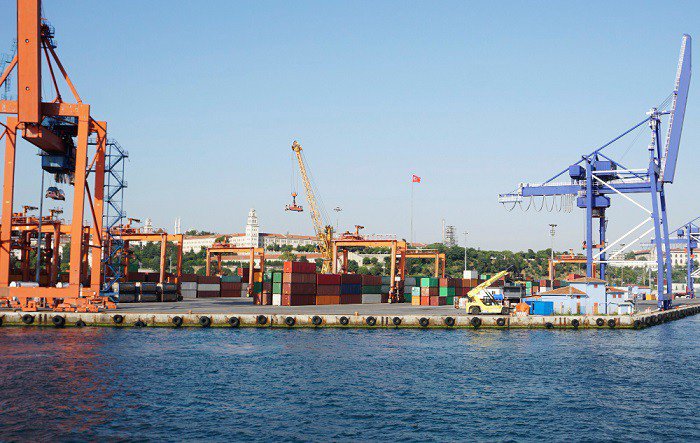
Ocean freight shipping is critical in international trade because it allows businesses to transport goods over long distances efficiently. However, it is not difficult, and making mistakes along the way can have serious consequences. When it comes to successful ocean shipping, there are several factors to consider, ranging from fluctuating sea freight rates to complex logistics.
We are here to talk about five essential tips for avoiding costly mistakes in ocean freight shipping. Whether you're a seasoned importer/exporter or new to the industry, these tips will assist you in navigating the complex world of ocean shipping.
Tips to Avoid Costly Ocean Shipping Mistakes: Top 5
Thoroughly Research and Select Reliable Shipping Partners
Selecting the right shipping partner is critical to ensuring a smooth and cost-effective ocean freight shipping process. Conduct extensive research to identify reputable freight forwarders or shipping lines with a proven track record in the industry. Look for companies with experience with your specific type of cargo and destination. Examine their customer reviews, industry certifications, and track record of delivering goods on time. Working with a dependable shipping partner will assist you in avoiding delays, lowering the risk of damage or loss, and reducing unexpected costs.
Optimize Packaging and Container Selection
Proper packaging and container selection are critical for ensuring the safety of your cargo during its journey across the ocean. Damaged goods can result from inadequate packaging, resulting in financial losses and potential liability issues. Ensure that your cargo is packed securely and appropriately, considering its specific requirements and fragility. Consider using specialized packaging materials, such as moisture-resistant barriers or shock-absorbing materials, if necessary. Choose the appropriate container size and type based on your cargo's dimensions, weight, and nature. Incorrect container selection can lead to wasted space and increased shipping costs.
Understand and Negotiate Sea Freight Rates
The cost of sea freight varies greatly depending on factors such as shipping route, cargo volume, and market demand. To avoid overpaying for shipping services, it is critical to understand how ocean freight rates are calculated and to negotiate favorable terms with your shipping partner. Remember current market rates and industry trends to ensure you receive a competitive pricing structure.
Consolidating shipments, taking advantage of economies of scale, and looking into alternative shipping routes can all help to reduce costs. Freight contracts should be reviewed and renegotiated regularly to ensure the best possible rates.
Implement Robust Ocean Freight Tracking
Visibility is critical in the ocean shipping process to ensure on-time delivery and avoid potential problems. Implementing a solid ocean freight tracking system allows you to track the progress of your cargo throughout its journey. Reliable tracking systems provide real-time updates on the vessel's location, estimated arrival times, and potential delays. This visibility enables you to address any issues that may arise, such as customs clearance delays or route diversions, in a proactive manner. Staying informed allows you to take appropriate action to minimize disruptions and avoid costly consequences.
Understand and Plan for Additional Charges
Ocean shipping is associated with several additional fees and surcharges in addition to the basic sea freight charges. These include terminal handling fees, documentation fees, customs duties, and port fees. Failure to include these extra costs in your shipping budget can result in unexpected financial burdens. Understand the charges completely and factor them into your cost calculations from the start. To avoid surprises and budgetary constraints, collaborate closely with your shipping partner and customs broker to identify and plan for any potential additional charges.
Conclusion
Ocean freight shipping requires meticulous planning, meticulous attention to detail, and proactive management. The above five suggestions can help you avoid costly mistakes and optimize ocean shipping operations. Thorough research and selection of dependable shipping partners, proper packaging and container selection, understanding and negotiating sea freight rates, implementing robust ocean freight tracking systems, and planning for extra charges are critical for ensuring a smooth and cost-effective shipping experience.
When choosing a shipping partner, consider their industry experience and reputation. Search for companies having a proven track record of delivering goods on time and efficiently handling shipments. A trustworthy shipping partner will be well-versed in the complexities of ocean shipping, including customs regulations, documentation requirements, and port operations. They will also have established relationships with key stakeholders such as customs officials and port authorities, which will help to speed up the shipping process.
In addition to the basic sea freight charges, several additional charges and surcharges must be factored into your budget. Terminal handling fees, documentation fees, customs duties, and port fees are some of the most common extra costs associated with ocean shipping. Learn how to choose dependable shipping partners, optimize packaging and container selection, negotiate competitive sea freight rates, implement robust ocean freight tracking systems, and budget for additional charges. You can easily navigate the complexities of ocean shipping with the help of FreightMango, saving time and money.





 Get instant quote
and compare offers in real time
Get instant quote
and compare offers in real time